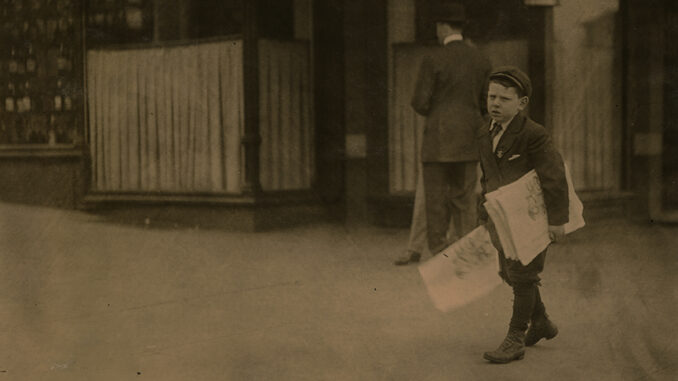
The Dorsky Museum at SUNY New Paltz proudly presents “Lewis Hine, Child Labor Investigator.” The exhibition curated by Anna Conlan and Amy Fredrickson will be displayed in the Sara Bedrick Gallery from February 6 to July 11 2021.
Howard Greenberg generously donated numerous photographs shot by Lewis Hine from his gallery in New York City to the Dorsky museum.
In 1908, Lewis Hine quit his job as a New York City school teacher to pursue his passion for bringing awareness to and aiming to end child labor in the United States. Hine worked alongside the National Child Labor Commitee to photograph children working in incredibly dangerous situations.
Hine traveled the United States for 16 years photographing children as young as four years old who were working long hours in places such as coal mines, mills, farms and factories.
“Lewis Hine would often focus on the investigator aspect of the work,” said curator Amy Fredrickson.
“He wanted to be able to show the American public what was happening, because most people were not aware of the fact that there were children who were three, four or five years old working in a field or factories,” she said.
Although he spent long periods of time traveling across the country to find stories depicting the worst cases of child labor, Hine’s photographs were often met with disbelief. Many Americans simply could not believe his photographs were real.
“People didn’t believe what Hine was saying; they didn’t even believe the photographs because some people have never seen photographs at that point.” Fredrickson said.
The similarities between Hine’s photographs and accounts and modern journalism is that oftentimes when people are shown a horrific truth, they do not want to believe it. Fredrickson claims that Hine’s work in its’ day was the equivalent of the modern notion of “fake news.”
“Journalists are trying to show what’s happening today, and they’re accused of making it up or being on either side of a political platform, and really they’re just trying to specifically show what is happening” she said.
Despite his work being praised today, Hine received little to no recognition of his hard work and dedication. Towards the end of his life, Hine went bankrupt and lived the rest of his life in poverty.
When viewers walk away from the exhibit, Fredrickson hopes they understand the great sacrifices Hine made in his own life in order to better the lives of children across the country.
“He was not recognized at that time for his contributions and I hope when people walk away, they can see that this was a big problem, as Hine did and he worked to change it, even though it took a long time for the changes to actually happen,” Fredrickson said.
Fredrickson wants to stress to students that this exhibition and other works held by the Dorsky Museum are available for viewing upon request and that students do not have to be part of a class to enjoy all that the museum has to offer.
“The collections available and we want the collection to be accessible to the students and for students to feel as though they are welcome. We really want students to be able to connect with them” Fredrickson stated.
More information regarding the “Lewis Hine, Child Labor Investigator” exhibition can be found on the Dorksky Website under current exhibitions or at www.newpaltz.edu/museum/exhibitions/lewis-hine-child-labor-investigator/.

